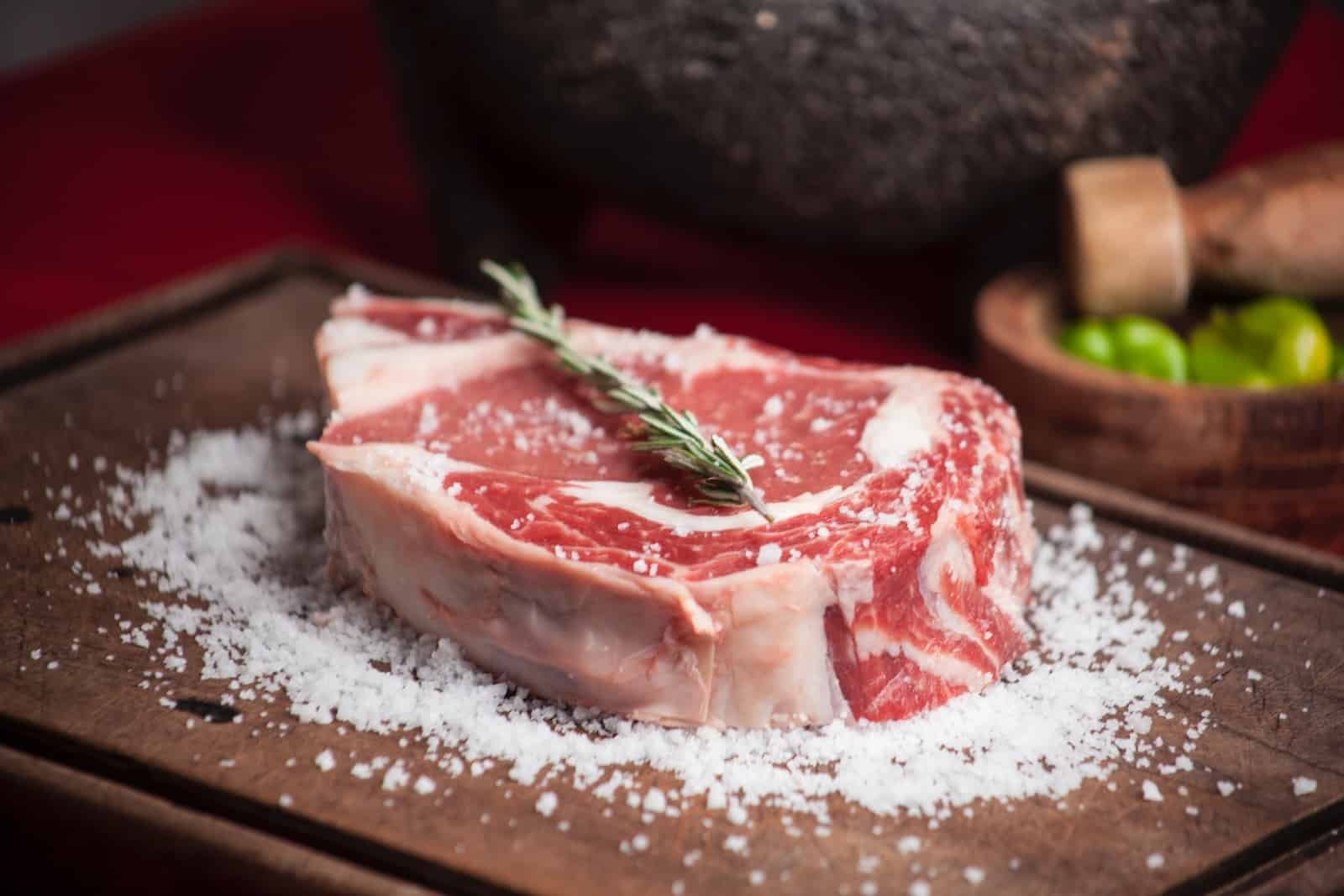Beef is a beloved protein that graces the dinner tables of countless families. It’s versatile, packed with flavor, and when cooked correctly, can be the centerpiece of a memorable meal. However, handling and cooking beef, particularly steaks and ground beef, comes with crucial safety considerations. According to the CDC, millions of Americans get sick from foodborne illnesses each year, and beef is often a culprit when mishandled. But don’t let this intimidate you; with the right knowledge, you can cook beef safely and deliciously every time.
Choosing Your Beef

Whether you’re picking a ribeye for grilling or ground beef for your famous spaghetti sauce, selecting high-quality beef is the first step to a delicious and safe meal.
Selecting Steaks
When it comes to steaks, look for:
Marbling
- Good marbling (streaks of fat within the muscle) is key to flavor and tenderness.
- The USDA grades beef as Prime, Choice, or Select, with Prime having the most marbling.
Freshness
- Steaks should have a bright red color when oxygenated and a slightly purplish hue in vacuum-sealed packages.
- Avoid any cuts that look brown or have a sour smell.
Ground Beef
Ground beef is a bit different:
Fat Content
- Choose the appropriate fat content for your needs: 80/20 is standard for burgers, while leaner mixes like 90/10 are better for sauces or casseroles.
- Remember, fat equals flavor but also more shrinkage during cooking.
Packaging
- Ground beef should be cold to the touch and have no tears in the packaging.
- Use or freeze ground beef by the “use by” date for optimal safety.
Storing Your Beef
Proper storage is vital in preventing bacterial growth and ensuring your beef stays safe to consume.
Refrigeration Tips
- Store beef at or below 40°F.
- Use steaks within 3-5 days and ground beef within 1-2 days.
Freezing Strategies
- Freeze beef if you’re not planning to use it within a few days.
- Steaks can maintain quality in the freezer for 6-12 months, while ground beef is best used within 4 months.
Preparing Your Beef
Safety in preparation is just as important as in selection and storage.
Cleanliness First
- Wash your hands with soap and water before and after handling raw beef.
- Sanitize cutting boards, utensils, and surfaces after they come in contact with raw beef.
Thawing Beef
Thawing beef properly is a critical step in food safety that often gets overlooked in the rush to get dinner on the table. The goal is simple: keep beef out of the “danger zone” — the temperature range of 40°F to 140°F where harmful bacteria can multiply rapidly. Let’s break down two safe methods of thawing to ensure your beef is both safe and delicious.
Refrigerator Thawing: The Safe Slow Dance
The refrigerator is the safest place to thaw beef because it keeps the meat at a constant, safe temperature below 40°F. This method requires some foresight, but it’s the most hands-off approach:
- Plan Ahead: Depending on the size of the cut, beef can take anywhere from 12 hours to a full day to thaw in the refrigerator. A whole roast might even need 24-48 hours.
- Plate It: Place your beef on a plate or in a container to catch any juices that may leak, preventing cross-contamination.
- Patience Pays Off: While it may test your patience, this slow thaw ensures even thawing and maintains meat quality.
Cold Water Thawing: The Quick(er) Method
When you’re pressed for time, the cold water thawing method can come to the rescue. It’s faster than refrigerator thawing but does require a bit more attention:
- Bag It Up: Ensure your beef is in a leak-proof plastic bag. This prevents water from getting into the meat, which can cause a mushy texture, and keeps bacteria from cross-contaminating the water.
- Submerge and Supervise: Place the bagged beef in a bowl or sink full of cold water. It’s crucial that the water is cold to keep the beef at a safe temperature.
- Stay on the Clock: Change the water every 30 minutes to continue to ensure a cold environment and encourage even thawing.
- Cook Promptly: Once thawed, cook the beef immediately. Bacteria don’t stand a chance against a prompt cook after a cold water thaw.
Cooking Beef to Perfection

Cooking beef not only to your preferred level of doneness but also to a safe temperature is where the magic happens.
Temperature Matters
For steaks:
- The USDA recommends an internal temperature of 145°F with a 3-minute rest time for safety.
- Use a meat thermometer to ensure accuracy.
For ground beef:
- Ground beef should always be cooked to an internal temperature of 160°F to kill harmful bacteria.
- Since ground beef can brown before it’s fully cooked, a thermometer is the only way to ensure safety.
Tips for Cooking Steaks
Grilling
- Preheat your grill and season the steak as desired.
- Sear over high heat, then move to a lower temperature to finish cooking.
- Let it rest after cooking to redistribute the juices.
Pan-Searing
- Heat a skillet over high heat and add oil.
- Sear the steak on both sides to develop a crust.
- Lower the heat to medium-high and cook to the desired doneness.
Ground Beef Cooking Know-How
Browning
- Cook ground beef over medium heat, breaking it apart with a spoon or spatula.
- Drain excess fat to keep your dish healthier.
Simmering
- For dishes like sauces or chili, simmer the ground beef with other ingredients to meld flavors.
- Keep the temperature steady and stir occasionally.
Avoiding Cross-Contamination
Cross-contamination can occur when bacteria from raw beef are transferred to ready-to-eat foods or cooking surfaces.
Separate Raw and Cooked
- Use different utensils and plates for raw and cooked beef.
- Never put cooked beef back on a plate that held it raw.
Clean, Clean, Clean
- After handling raw beef, clean all surfaces and hands thoroughly.
- Consider using disposable gloves when handling raw meat if you’re preparing multiple foods at once.
Handling Leftovers
Leftover beef can be a great next-day meal if handled properly.
Storing Leftovers
- Cool leftovers quickly and store them in the refrigerator within 2 hours ofcooking.
- Use shallow containers to help leftovers cool more evenly.
Reheating
- When reheating, ensure that beef reaches 165°F to kill any potential bacteria.
- Consume leftovers within 3-4 days for the best quality and safety.

When Things Look Off
If your beef starts to show signs of spoilage such as a funky smell, slimy texture, or off color, it’s better to err on the side of caution and throw it away. Remember, when in doubt, throw it out!
Putting It All Together
Congratulations, you’re now equipped with the essential knowledge to handle beef like a pro! From the careful selection and storage to the meticulous preparation and cooking, each step is crucial in ensuring that your beef dishes are not only delectable but also safe for your family to enjoy.
Remember, food safety is paramount, and it begins the moment you select your beef at the market and continues all the way through storage, preparation, cooking, and even into how you manage leftovers. By following the guidelines provided, you’ll minimize the risk of foodborne illness and maximize the enjoyment of your home-cooked meals.
Always use a meat thermometer to check for safe internal temperatures—145°F for steaks with a 3-minute rest and 160°F for ground beef. Keep those cooking surfaces and utensils clean to prevent cross-contamination, and store leftovers properly for safe second rounds.


